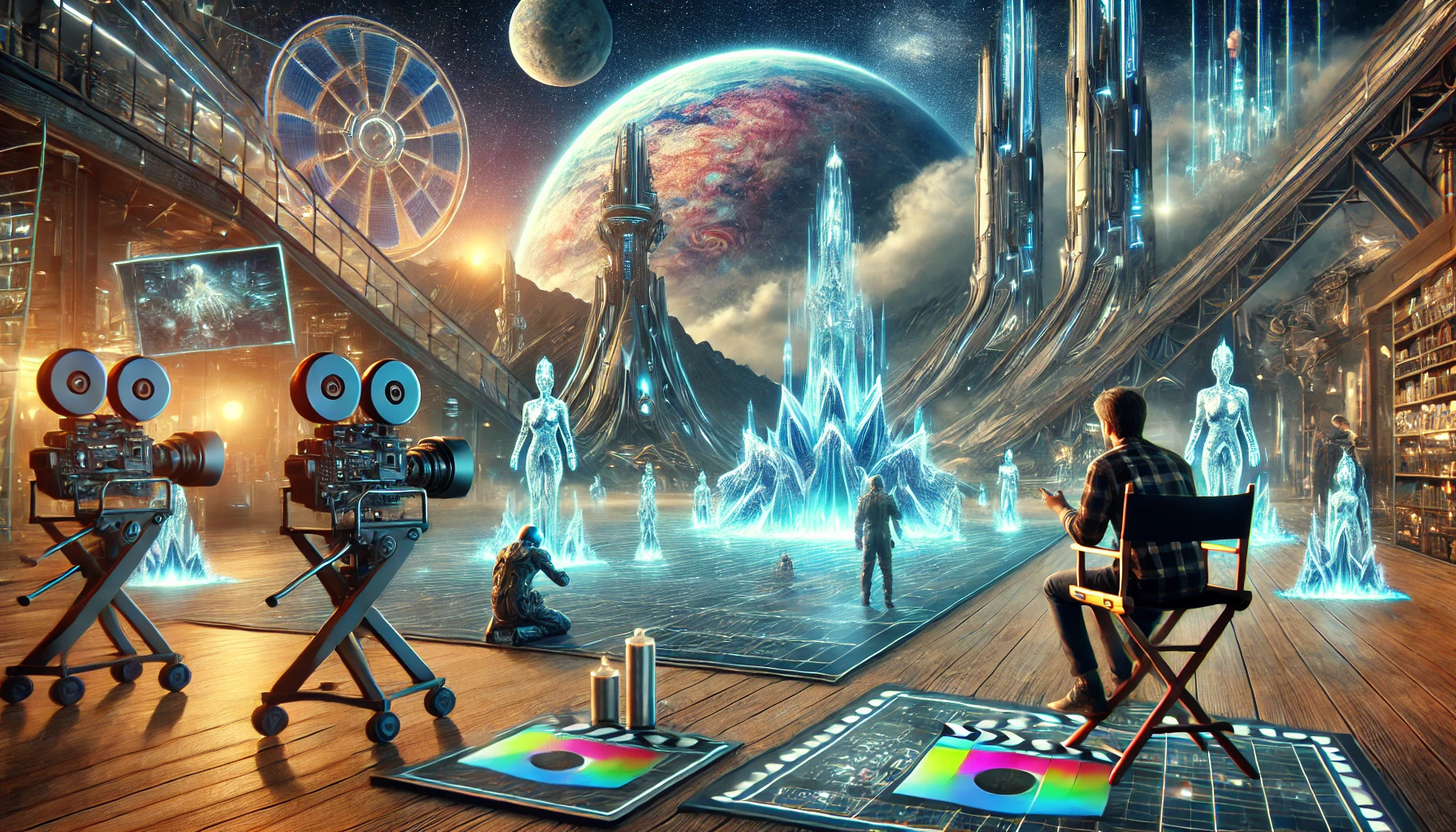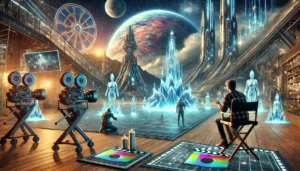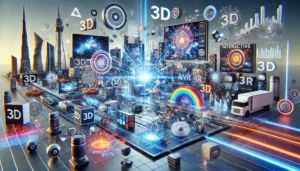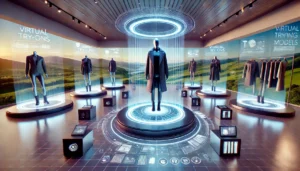The movie industry has always been a playground for technological innovation. From the early days of practical effects to the current era of computer-generated imagery (CGI), filmmakers have continuously sought new tools to bring their visions to life. Among these tools, 3D modeling stands out as a transformative technology, reshaping how movies are made and experienced. This blog explores the pivotal role of 3D modeling in the film industry and highlights how 3DAiLY can elevate the production process.
Applications of 3D Modeling in Film
3D modeling transforms the filmmaking process by enabling the creation of lifelike characters, immersive environments, and jaw-dropping visual effects. It also enhances pre-visualization, allowing filmmakers to perfect their storytelling techniques.
1. Creating Stunning Visual Effects (VFX)
Visual effects are a cornerstone of modern filmmaking, enabling directors to push the boundaries of storytelling and craft scenes that defy the limits of physical reality. From epic space battles to natural disasters, 3D modeling plays a crucial role in generating realistic effects that captivate audiences.
According to a report by Grand View Research, the global visual effects market was valued at $26.7 billion in 2021 and is projected to grow at a compound annual growth rate (CAGR) of 10.7% through 2030. This growth underscores the increasing reliance on 3D modeling tools like Autodesk Maya and Houdini to produce these effects.
2. Designing Realistic Characters
In both animated and live-action films, character design is a critical element. 3D modeling allows artists to create detailed, lifelike characters with intricate textures and animations. Movies like Avatar and The Lion King (2019) are prime examples of how 3D modeling can bring characters to life, blending seamlessly with live-action footage. These innovations are made possible by advanced software such as ZBrush and Blender, which enable precise control over every aspect of a character’s appearance and movement.
3. Building Immersive Environments
Creating realistic and immersive environments is another area where 3D modeling excels. Filmmakers can construct entire worlds digitally, from futuristic cities to alien landscapes. This approach not only reduces production costs but also offers unparalleled creative freedom. For instance, the Marvel Cinematic Universe extensively uses 3D modeling to design its iconic settings, such as Wakanda and Asgard. The ability to pre-visualize these environments in 3D ensures that every detail aligns with the director’s vision.
4. Pre-Visualization and Storyboarding
Before cameras start rolling, filmmakers use 3D modeling for pre-visualization and storyboarding. This process involves creating rough 3D representations of scenes to plan camera angles, lighting, and shot composition. Tools like SketchUp and Cinema 4D are often used for this purpose, allowing directors and cinematographers to experiment with different setups and optimize their storytelling.
Challenges in 3D Modeling for Film
While 3D modeling offers immense benefits, it also comes with challenges. Creating high-quality models is time-consuming and requires skilled artists. Additionally, the cost of software and hardware can be prohibitive for smaller studios and independent filmmakers. These barriers highlight the need for accessible and efficient solutions, which is where 3DAiLY comes into play.
Another significant challenge is maintaining consistency across complex projects involving multiple teams. Coordinating various departments to ensure models align with the film’s artistic vision can be daunting. Miscommunication or technical discrepancies often lead to delays and rework, increasing production time and costs. Addressing these challenges requires streamlined workflows and collaborative tools that keep all teams on the same page.
How 3DAiLY Can Transform Film Production?
3DAiLY is an innovative platform that leverages artificial intelligence to streamline the 3D modeling process. Designed with the needs of filmmakers in mind, 3DAiLY offers a range of features that address the industry’s most pressing challenges.
1. Accelerated Model Creation
Traditional 3D modeling can take weeks or even months to complete. 3DAiLY’s AI-driven tools significantly reduce this timeline, enabling artists to generate complex models in hours. This efficiency allows filmmakers to allocate more time to other aspects of production, such as editing and post-production.
2. High-Quality Assets
The platform provides a vast library of pre-made, production-ready 3D assets. These assets are meticulously crafted to meet the high standards of the film industry, ensuring that they integrate seamlessly into any project. Whether you need a detailed character model or a photorealistic environment, 3DAiLY has you covered.
3. Cost-Effective Solutions
By automating many aspects of the modeling process, 3DAiLY reduces the need for extensive manpower and expensive software licenses. This cost-effectiveness makes it an ideal choice for independent filmmakers and smaller studios looking to compete with industry giants.
4. Customization and Flexibility
Every film project is unique, requiring models that align with specific artistic visions. 3DAiLY’s tools allow for extensive customization, enabling filmmakers to tweak every detail of a model to suit their needs. This flexibility ensures that the final product aligns perfectly with the creative direction of the film.
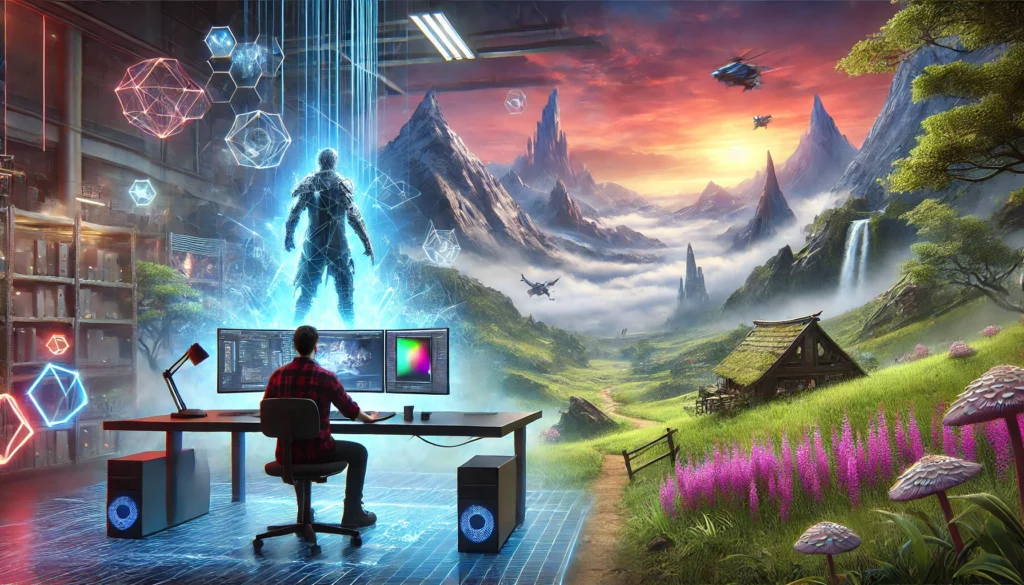
Case Studies: 3D Modeling in Iconic Films
3D modeling has powered cinematic masterpieces like Avatar, with its vibrant worlds, The Jungle Book, blending CGI animals with real-life footage, and Inception, where surreal environments elevated its storytelling.
1. Avatar
James Cameron’s Avatar is often cited as a milestone in 3D modeling and CGI. The film’s lush environments and lifelike characters were created using cutting-edge 3D modelling techniques, setting a new benchmark for visual storytelling.
2. The Jungle Book (2016)
In this live-action/CGI hybrid, 3D model was used to create the film’s animal characters and jungle settings. The seamless integration of these elements with live-action footage demonstrated the potential of 3D modeling to enhance realism.
3. Inception
Christopher Nolan’s Inception utilized 3D modeling to design its mind-bending environments, such as the iconic folding cityscape. These effects were instrumental in conveying the film’s complex narrative.
Conclusion
3D modeling has become an indispensable tool in the movie industry, enabling filmmakers to push the boundaries of creativity and storytelling. However, the traditional modeling process can be time-consuming and costly, posing challenges for many production teams. 3DAiLY offers a game-changing solution, combining the power of AI with a user-friendly platform to make high-quality 3D modeling accessible to all. By integrating 3DAiLY into their workflows, filmmakers can streamline production, reduce costs, and achieve stunning visual effects that captivate audiences. Whether you’re a seasoned director or an independent filmmaker, 3DAiLY is your partner in bringing your cinematic visions to life.

